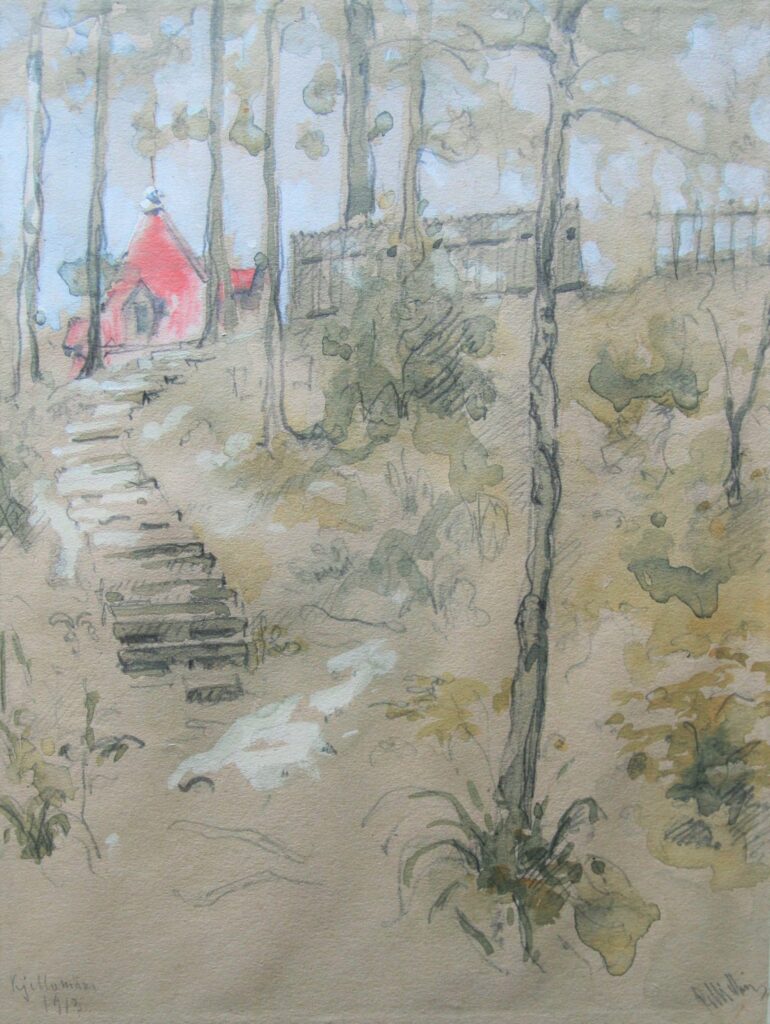-
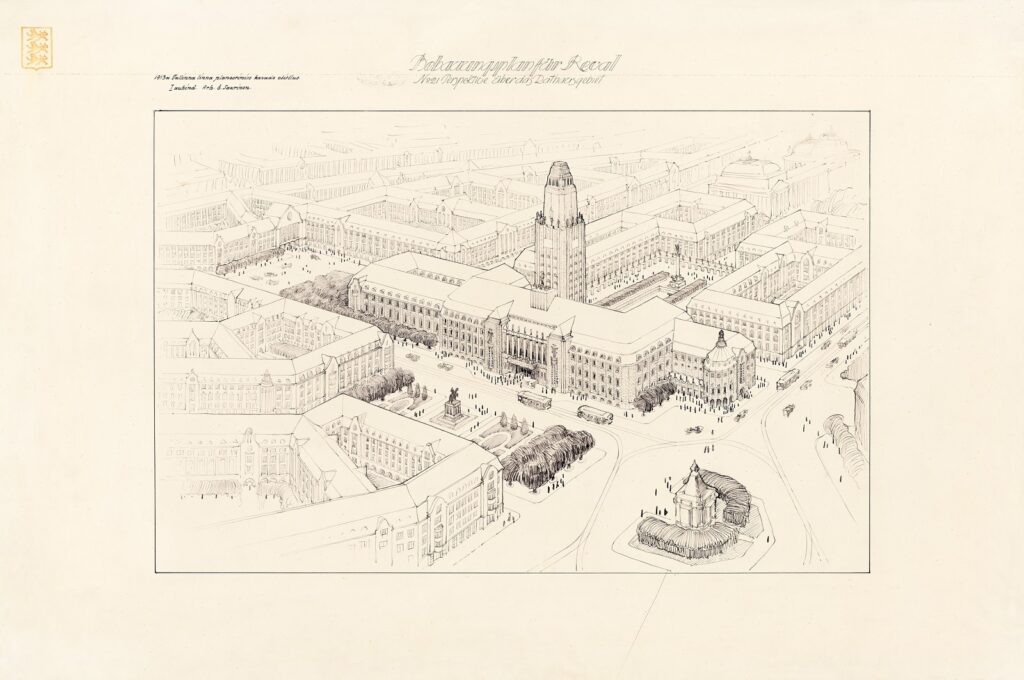
-
“Suur-Tallinn” (Greater-Tallinn) master plan, 1913. Eliel Saarinen
-
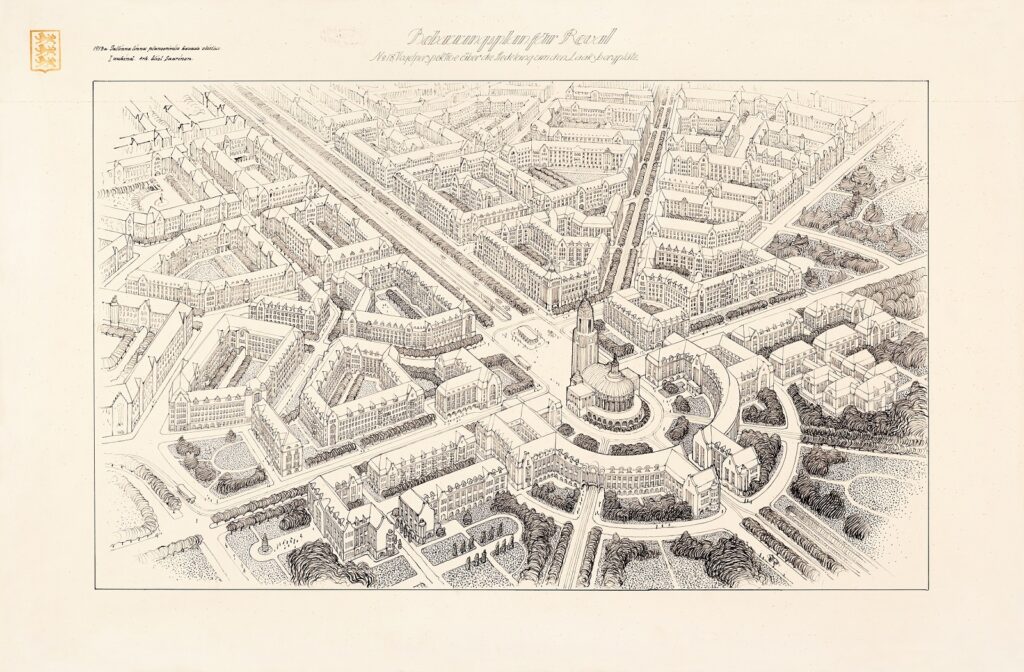
-
“Suur-Tallinn” (Greater-Tallinn) master plan, 1913. Eliel Saarinen
Eliel Saarinen, 1913. EAM 1.1.8
“Suur-Tallinn” (Greater-Tallinn) master plan
In the early 20th century, Tallinn was transforming from a sleepy provincial resort town into a modern, mid-sized European city. Rapidly developing industry and population growth resulted in the need to give consideration to the city as a comprehensive system. Finnish architect Eliel Saarinen had already worked with plans for developing Budapest, Helsinki, and Canberra. Thus, his first-place prize in the 1912–1913 competition for a general plan of Tallinn was somewhat expected. Saarinen’s entry is monumental: the city centre would be stocked with six-storey stone buildings, while worker-class neighbourhoods would be reformed with row-houses. This year is the 150th anniversary of the birth of architect Eliel Saarinen. The drawings, which belonged to the Tallinn City Government for a long time, were recently given to the museum.
Text: Sandra Mälk
Paul Mielberg, 1913. EAM K 37
Kellomäki Motif
Paul Mielberg, architect and lecturer at the University of Tartu 1922–1940, was born on March 18, 1881 in Tbilisi (Georgia). His father, Johannes Mielberg from Viljandi County, was the director of the Physics Observatory in Tbilisi. From 1899 to 1901, Paul Mielberg studied at the Riga Polytechnic Institute, afterwards at the St. Petersburg Academy of Arts, where he received a diploma of Artist-Architect in 1910. After graduating, Mielberg worked for several well-known St. Petersburg architects. From 1911 to 1918, he was the chief architect of the Swedish architect Fredrik Lidval (Karl Burman also worked as Lidval’s assistant a few years before), participating in the design and construction of St. Petersburg Art Nouveau landmarks such as the Azov-Don Bank and Count Tolstoy’s tenement house. In 1922, Mielberg came to Tartu and became an associate professor of construction studies at the University of Tartu and also an architect of the university. More than a dozen buildings belonging to the university were built or reconstructed according to his design or supervision. On December 18, 1996, art historian Andres Kurg wrote a review article about Paul Mielberg’s role as an architect of the university in Postimees “About the Architect who designed the university and the Tähtvere district”.
Paul Mielberg left Estonia in 1941 and died in 1942 in Germany.
In 2010, the architect’s daughter Olga Kompus donated her father’s watercolors from 1911–1913 to the museum. Kellomäki, a popular summer resort and excursion destination in Karelia on the Gulf of Finland, about 40 km from St. Petersburg, is a sketchy romantic landscape with Art Nouveau handwriting. For moody views of the Kellomäki, see the video: https://www.youtube.com/watch?v=1ACNcIEXRIM
Text: Anne Lass
-
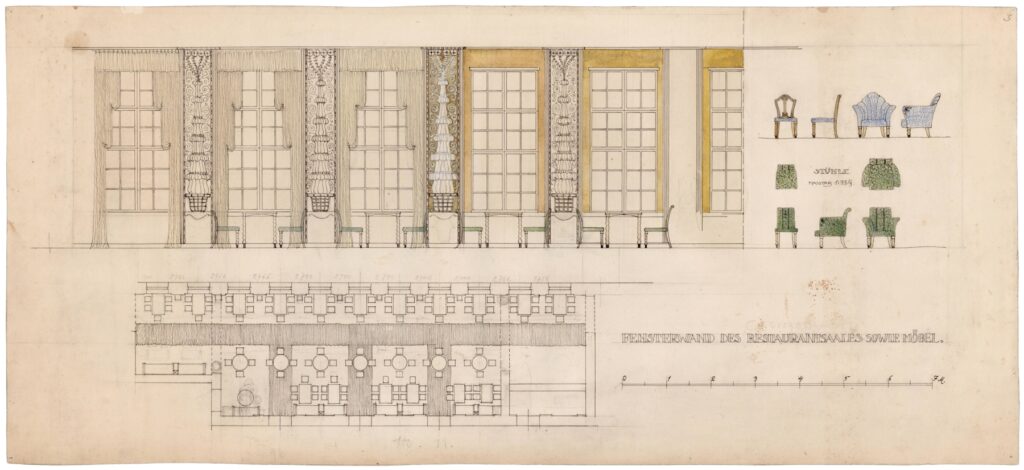
-
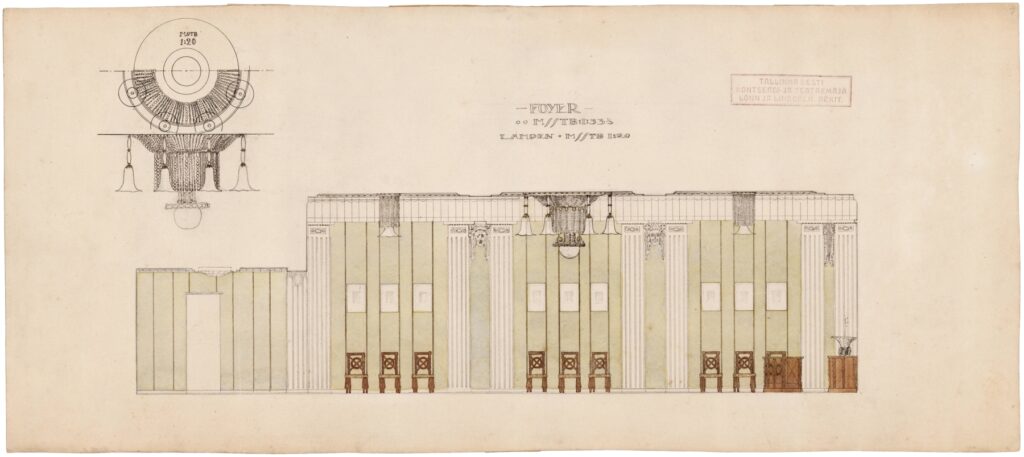
-
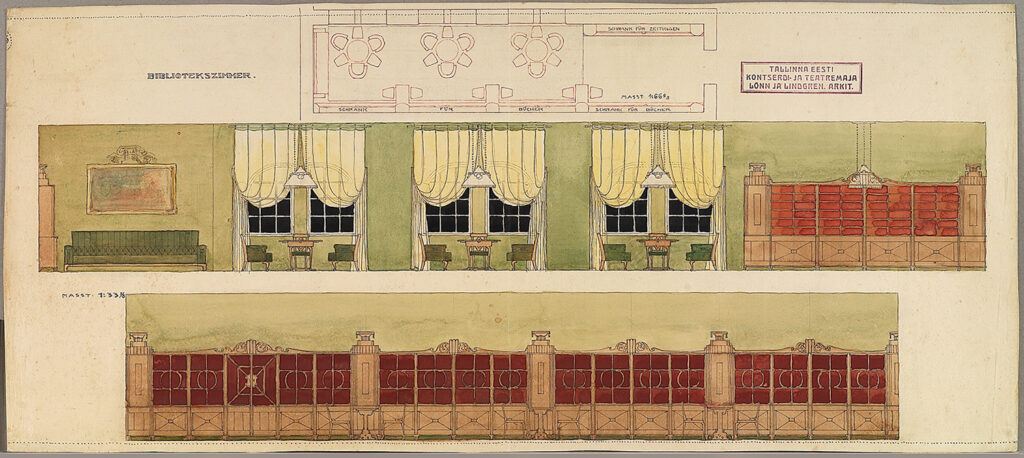
-
Interior design of the Estonia Theatre, 1911-1912
Armas Lindgren, Wivi Lönn, 1912. MEA 4.1.1
Interiors of the Estonia Theatre and Concert Hall
These watercolour drawings of an art-nouveau and classicist restaurant, library, and foyer were part of an entry package for the Estonia Theatre and Opera House’s architectural competition. The theatre building became a chief national symbol, a cultural citadel and one of the largest structures in Tallinn at the time. The foyers are adorned with mascarons; majestic chandeliers; and fashionable, fluted new-classicist pilasters, which were a novel phenomenon. Still, the final design of the national theatre’s foyer was slightly altered. The original theatre was destroyed in the March 1944 bombing of Tallinn, then restored according to a design by Alar Kotli (completed 1953), which replaced the original art-nouveau interiors with classicist Stalinist design. Drawings were acquired from the institution of “Eesti Ehitusmälestised” in 1993. Text: Sandra Mälk






